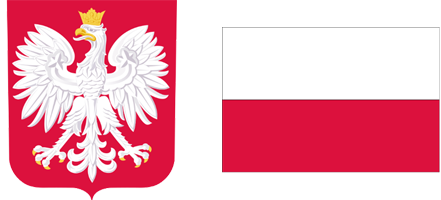About the Journal
Scope and Aims
Plant and Fungal Systematics is an international, completely free, peer-reviewed, open-access, fast-track, full-color journal, published by W. Szafer Institute, Polish Academy of Sciences in Krakow (Poland). Articles are published online with full pagination immediately upon acceptance, and hardcopies are published twice a year (July, December).
The original (reference) version of Plant and Fungal Systematics is the electronic edition.
Journal was founded in 1953 as Fragmenta Floristica et Geobotanica and continued as Polish Botanical Journal after 2001. Since 2018, the journal has continued publication under the current title: Plant and Fungal Systematics.
The main goal of Plant and Fungal Systematics is to promote integrated systematic biology (fusing traditional approaches, modern molecular techniques and bioinformatics tools) in order to more effectively describe plant and fungal biodiversity within a phylogenetic framework. Detailed descriptions and illustrations of morphological characters for newly introduced species, and deposition of voucher specimens, cultures, DNA sequences, alignments and phylogenies in public repositories are central to this endeavor.
Plant and Fungal Systematics publishes original research papers of the highest quality, larger monographs, review articles on timely subjects, short communications, and book reviews. The journal articles address the biodiversity, taxonomy, molecular systematics and evolution of algae (broadly defined), cyanobacteria, bryophytes, vascular plants, fungi, oomycetes and myxomycetes.
Similarity Check Plagiarism Screening System
The editorial board is participating in a growing community of Similarity Check System's users in order to ensure that the content published is original and trustworthy. Similarity Check is a medium that allows for comprehensive manuscripts screening, aimed to eliminate plagiarism and provide a high standard and quality peer-review process. Detailed description of the Similarity Check System can be found at: https://www.crossref.org/services/similarity-check/

Plant and Fungal Systematics is an international, completely free, peer-reviewed, open-access, fast-track, full-color journal, published by W. Szafer Institute, Polish Academy of Sciences in Krakow (Poland). Articles are published online with full pagination immediately upon acceptance, and hardcopies are published twice a year (July, December).
The original (reference) version of Plant and Fungal Systematics is the electronic edition.
Journal was founded in 1953 as Fragmenta Floristica et Geobotanica and continued as Polish Botanical Journal after 2001. Since 2018, the journal has continued publication under the current title: Plant and Fungal Systematics.
The main goal of Plant and Fungal Systematics is to promote integrated systematic biology (fusing traditional approaches, modern molecular techniques and bioinformatics tools) in order to more effectively describe plant and fungal biodiversity within a phylogenetic framework. Detailed descriptions and illustrations of morphological characters for newly introduced species, and deposition of voucher specimens, cultures, DNA sequences, alignments and phylogenies in public repositories are central to this endeavor.
Plant and Fungal Systematics publishes original research papers of the highest quality, larger monographs, review articles on timely subjects, short communications, and book reviews. The journal articles address the biodiversity, taxonomy, molecular systematics and evolution of algae (broadly defined), cyanobacteria, bryophytes, vascular plants, fungi, oomycetes and myxomycetes.
Similarity Check Plagiarism Screening System
The editorial board is participating in a growing community of Similarity Check System's users in order to ensure that the content published is original and trustworthy. Similarity Check is a medium that allows for comprehensive manuscripts screening, aimed to eliminate plagiarism and provide a high standard and quality peer-review process. Detailed description of the Similarity Check System can be found at: https://www.crossref.org/services/similarity-check/

We process personal data collected when visiting the website. The function of obtaining information about users and their behavior is carried out by voluntarily entered information in forms and saving cookies in end devices. Data, including cookies, are used to provide services, improve the user experience and to analyze the traffic in accordance with the Privacy policy. Data are also collected and processed by Google Analytics tool (more).
You can change cookies settings in your browser. Restricted use of cookies in the browser configuration may affect some functionalities of the website.
You can change cookies settings in your browser. Restricted use of cookies in the browser configuration may affect some functionalities of the website.


